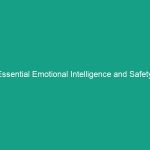Introduction
In today’s workplace, health, safety, and Environment (HSE) considerations are paramount. Seasonal allergies can significantly impact employee well-being and productivity, making it essential for organizations to take proactive measures. Preparing for seasonal allergies at work involves understanding the allergens prevalent during different seasons, implementing Best Practices, and fostering an environment that prioritizes employee health. This article delves into comprehensive strategies, regulatory frameworks, and practical tips to help both employers and employees navigate the challenges of seasonal allergies effectively.
Understanding Seasonal Allergies
Seasonal allergies, often referred to as hay fever or allergic rhinitis, are triggered by outdoor allergens such as pollen from trees, grasses, and weeds. These allergens can cause a range of symptoms, including sneezing, nasal congestion, itchy eyes, and fatigue. Understanding the nature of these allergens is the first step in preparing for seasonal allergies at work.
Common Allergens
During different seasons, various allergens come into play. For example:
- Spring: Tree pollen is rampant, primarily from oak, birch, and cedar.
- Summer: Grass pollen, particularly from Bermuda and Timothy grasses, peaks.
- Fall: Ragweed pollen can travel hundreds of miles, affecting many individuals.
- Winter: Indoor allergens like dust mites and mold can exacerbate symptoms.
Recognizing these patterns is crucial for both employees and employers in preparing for seasonal allergies at work.
Regulatory Frameworks and Guidelines
In many regions, regulatory frameworks exist to ensure Workplace Safety concerning health issues, including allergies. Employers must familiarize themselves with applicable laws and guidelines that pertain to employee health and wellness.
Occupational Safety and Health Administration (OSHA)
osha provides guidelines that emphasize the importance of maintaining a safe work environment. Employers should conduct risk assessments to identify potential allergens in the workplace and implement measures to mitigate exposure. This includes ensuring adequate ventilation, maintaining clean workspaces, and providing access to allergy relief resources.
Employers’ Responsibilities
Employers are responsible for creating an environment conducive to health. This includes:
- Providing Training on recognizing and managing allergy symptoms.
- Implementing policies that support employees in managing their allergies.
- Ensuring that the workplace is free from allergens as much as possible.
Employers who prioritize these aspects not only protect their employees but also enhance workplace morale and productivity.
Best Practices for Preparing for Seasonal Allergies at Work
Implementing Best Practices is essential for both employees and employers. These practices help create a supportive environment that minimizes the impact of seasonal allergies.
Creating an Allergy-Friendly Workplace
To create an allergy-friendly workplace, consider the following strategies:
- Improve Indoor Air Quality: Ensure that air filtration systems are regularly maintained and upgraded to reduce airborne allergens.
- Maintain Cleanliness: Regular cleaning schedules should include deep cleaning to reduce dust and mold accumulation.
- Designate No-Pollen Zones: If possible, designate specific areas where allergens are minimized, such as indoor plants that do not produce pollen.
These practices can significantly reduce allergens and help employees manage their symptoms more effectively.
Employee Education and Awareness
Education is key to managing seasonal allergies. Employers should provide resources and training for employees on:
- Identifying allergy symptoms and triggers.
- Understanding when to seek medical advice.
- Utilizing allergy medications effectively.
By empowering employees with knowledge, they can take proactive steps in preparing for seasonal allergies at work.
Flexible Work Arrangements
Offering flexible work arrangements can greatly benefit employees suffering from seasonal allergies. Options include:
- Remote work during peak allergy seasons.
- Flexible hours to avoid high pollen times.
Flexibility can help employees manage their symptoms more effectively, leading to increased productivity and job satisfaction.
Case Studies: Successful Allergy Management in the Workplace
Examining case studies where organizations have successfully implemented allergy management strategies can provide valuable insights into best practices.
Company A: Creating Allergy-Free Zones
Company A, a tech firm, recognized that many of its employees suffered from seasonal allergies. To address this, they designated specific areas of the office as “allergy-free zones” by removing all plants and using air purifiers. Employee feedback indicated a significant reduction in allergy symptoms, leading to improved focus and productivity.
Company B: Education and Resources
Company B implemented a comprehensive training program for its employees, focusing on allergy management. They provided resources such as informational pamphlets and workshops on how to manage symptoms effectively. As a result, absenteeism due to allergies dropped by 30%, showcasing the importance of education in preparing for seasonal allergies at work.
Challenges in Managing Seasonal Allergies at Work
Despite best efforts, managing seasonal allergies can present challenges. Recognizing these challenges is the first step toward addressing them.
Awareness and Stigma
One significant challenge is the lack of awareness regarding the severity of seasonal allergies. Some employees may feel stigmatized for taking sick leave or needing accommodations. Employers must foster an understanding culture that recognizes allergies as a legitimate health concern.
Resource Limitations
Not all organizations have the resources to implement extensive allergy management programs. It is essential for employers to seek creative solutions, such as leveraging community resources or partnering with local health organizations to provide support.
Future Trends in Allergy Management
As awareness of health issues in the workplace continues to grow, future trends in allergy management are becoming more apparent. Here are some trends to watch for:
Technology Integration
The integration of technology in Workplace Health management is on the rise. Tools such as air quality monitors can help organizations track allergen levels in real-time, allowing for immediate action when thresholds are exceeded. Furthermore, apps that provide allergy forecasts can help employees plan their workdays accordingly.
Personalized Health Plans
Future workplaces may also see more personalized health plans that include allergy management strategies tailored to individual employees. This could involve regular health assessments and customized recommendations based on their specific allergy profiles.
Conclusion
Preparing for seasonal allergies at work is a critical aspect of ensuring employee health and Safety. By understanding allergens, implementing effective workplace strategies, and fostering a supportive culture, organizations can mitigate the impact of allergies on productivity and well-being. As we look to the future, embracing technology and personalized health plans will further enhance our approach to managing seasonal allergies. Employers and employees alike should take action now to create a healthier, more accommodating workplace for all. Don’t wait—start preparing for seasonal allergies at work today!


